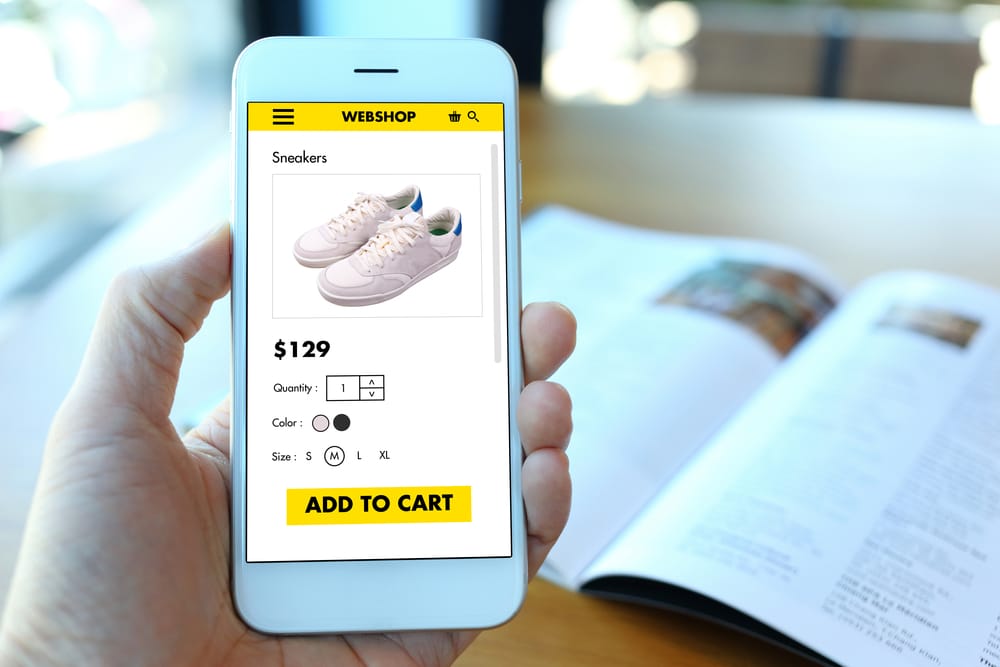The basics of CRO: Conversion Rate Optimisation
Conversion Rate Optimisation: the title might sound a little intimidating, but really what CRO boils down to is getting more customers to do what you want them to when they land on your website.
For most businesses, that translates into making a purchase – but there are many different goals you might have depending on the nature of your business and your unique objectives. For example, your goal might be to get more people to subscribe to your newsletter or mailing list, leave their contact details, listen to your podcast, download a white paper, make a donation, read your blog, or follow you on social media.
Whatever the desired action is, CRO involves finding ways to ensure more of your website visitors do what you want them to. In this post we break the process down into 5 actionable steps that any business or organisation can take.
CRO in 5 basic steps
Step 1: Figure out what your current conversion rate is
You can’t manage what you can’t measure, so getting to grips with where you’re starting from is the only place to begin. The formula for working out your conversion rate is pretty simple:
(Conversions divided by total visitors) multiplied by 100
So if your total website visitors over the past month were 5,000 and you made 500 sales off those visitors, your current conversion rate is 10%. In other words, 10 out of every 100 people who visit your website become paying customers.
Normally this is worked out over a period of one month, but you can use weekly figures if you’d like to keep a closer eye on the impacts any improvements you’re making are having.
Where do I find this data?
The easiest way to access these figures is through a platform like Google Analytics, which will track all these metrics for you, so you don’t even have to the math. In addition, you can also see stats on specific pages on your website, so you can see which individual products or services are performing best, and which need some tweaking.
Step 2: Update your target market knowledge and buyer personas
The next step helps with understanding why certain pages are doing well, or not so well. The better you understand your target market, the easier it is to provide a website they’ll love. Remember that if it’s been a while since you did your market research, it’s well worth revisiting. Customer preferences change rapidly, and you may even have new competitors you’re not aware of.
Step 3: Bring in some extra tools and outside opinions
With this data in mind, try and get a better sense of where your website might be lacking.
Two very useful tools are user surveys – literally getting strangers to give their opinions of your platform, and usability testing software – which uses AI and algorithms to scan your site and see where there are obvious errors. Fixing these can result in dramatic improvements in your conversion rate for minimal effort.
Step 4: Brainstorm problems and solutions
Now it’s time to bring all this knowledge together, and come up with a plan of action to boost your conversions. Here are a few ideas to get you started:
- SEO – if a lack of traffic is your main problem, that’s a neon sign pointing towards the need for a better Search Engine Optimisation strategy.
- Customers can’t find the info they’re looking for straight away. If you’re getting a large volume of traffic but low conversions, it might be because visitors aren’t finding the answers they need. One excellent way to address this issue is by implementing a live chat service on your site. If someone has a question, there’s a human being right there to answer it. This alone can have a dramatic effect on conversions. Even if you don’t have the manpower to run a 24/7 live chat service yourself, it’s simple and affordable to outsource it.
- Page speed – if your page takes too long to load, potential customers will get frustrated and take their business elsewhere.
- Poor or inappropriate design – pages which are too busy and cluttered, contain fonts that aren’t easy to read, or are just plain boring can be big deterrents.
- Lack of great content – most online shoppers like to do a fair bit of research before they buy. And when they do buy, they’re likely to give the sale to the website which provided the most informative and helpful content.
- Site not mobile friendly – This year, mobile ecommerce sales are expected to account for 54% of total ecommerce sales. If your site doesn’t look great on whatever device your prospect is using, that’s a major problem.
Step 5: Implement fixes and test – then rinse and repeat
Once you’ve identified the biggest potential problems, it’s time to start implementing solutions! It’s best just to make one change at a time, and give that change a chance to see results, before you move onto the next.
If you make more than one change at a time, you won’t be able to tell which worked and which didn’t – or even if the positive impact of one was cancelled out by the negative impact of another.
Where possible, use A/B or split testing. This involves having half your visitors see one version of a page, and half seeing another. Whichever performs best is the one you keep! You can keep repeating this process over and over until you arrive at the best possible version of your website or landing page.




VWO provides a complete CRO suite, so a user does not have to look for external tools. He can analyze the user behavior on the site using features like heatmaps, session recordings etc, create observations and hypothesis and then A/B test to further optimize.